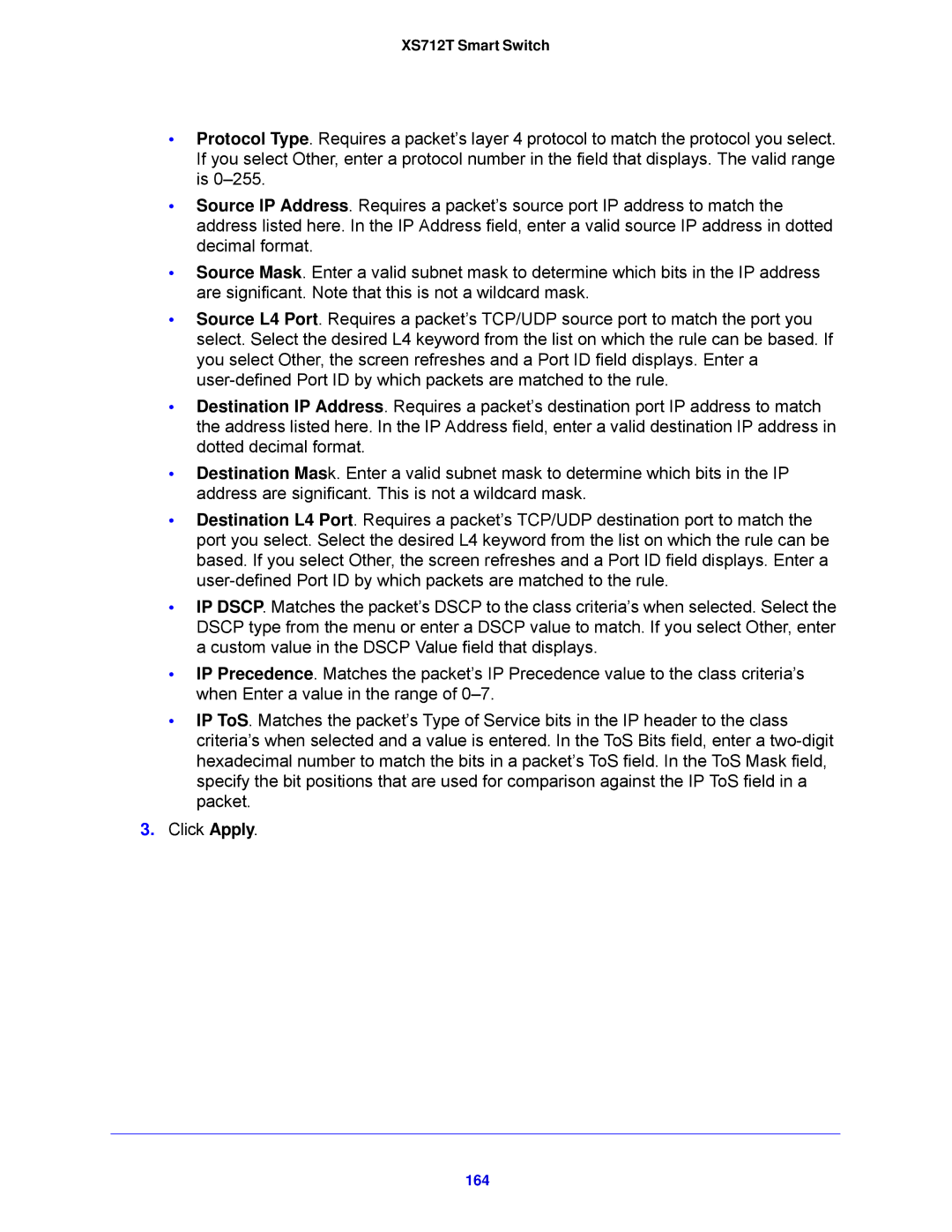XS712T Smart Switch
•Protocol Type. Requires a packet’s layer 4 protocol to match the protocol you select. If you select Other, enter a protocol number in the field that displays. The valid range is
•Source IP Address. Requires a packet’s source port IP address to match the address listed here. In the IP Address field, enter a valid source IP address in dotted decimal format.
•Source Mask. Enter a valid subnet mask to determine which bits in the IP address are significant. Note that this is not a wildcard mask.
•Source L4 Port. Requires a packet’s TCP/UDP source port to match the port you select. Select the desired L4 keyword from the list on which the rule can be based. If you select Other, the screen refreshes and a Port ID field displays. Enter a
•Destination IP Address. Requires a packet’s destination port IP address to match the address listed here. In the IP Address field, enter a valid destination IP address in dotted decimal format.
•Destination Mask. Enter a valid subnet mask to determine which bits in the IP address are significant. This is not a wildcard mask.
•Destination L4 Port. Requires a packet’s TCP/UDP destination port to match the port you select. Select the desired L4 keyword from the list on which the rule can be based. If you select Other, the screen refreshes and a Port ID field displays. Enter a
•IP DSCP. Matches the packet’s DSCP to the class criteria’s when selected. Select the DSCP type from the menu or enter a DSCP value to match. If you select Other, enter a custom value in the DSCP Value field that displays.
•IP Precedence. Matches the packet’s IP Precedence value to the class criteria’s when Enter a value in the range of
•IP ToS. Matches the packet’s Type of Service bits in the IP header to the class criteria’s when selected and a value is entered. In the ToS Bits field, enter a
